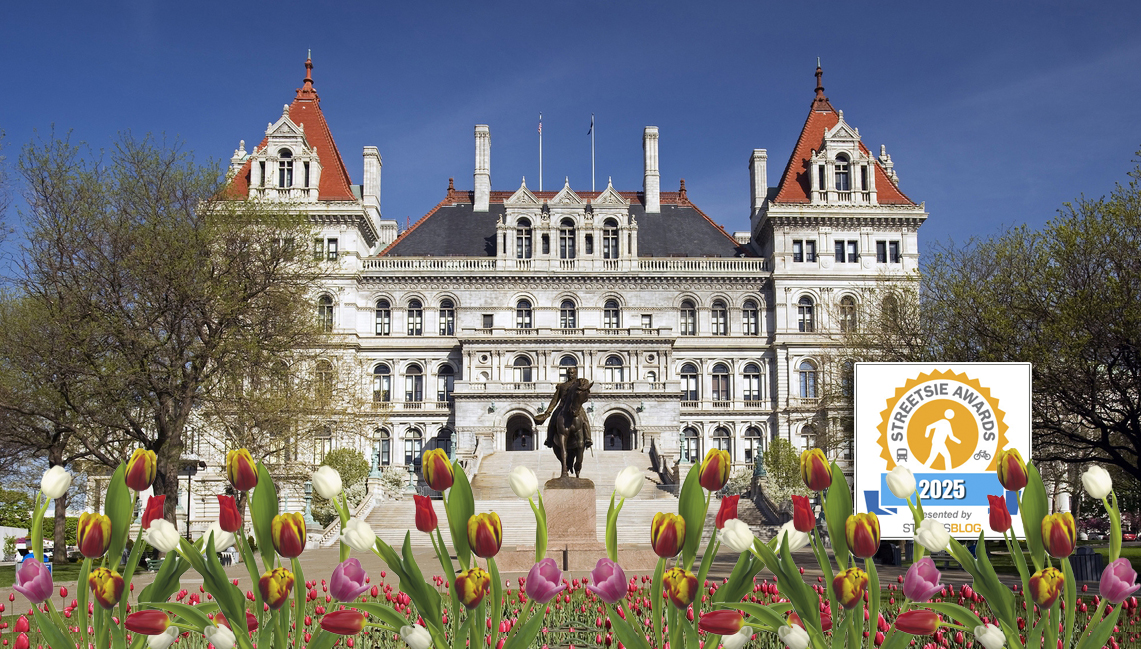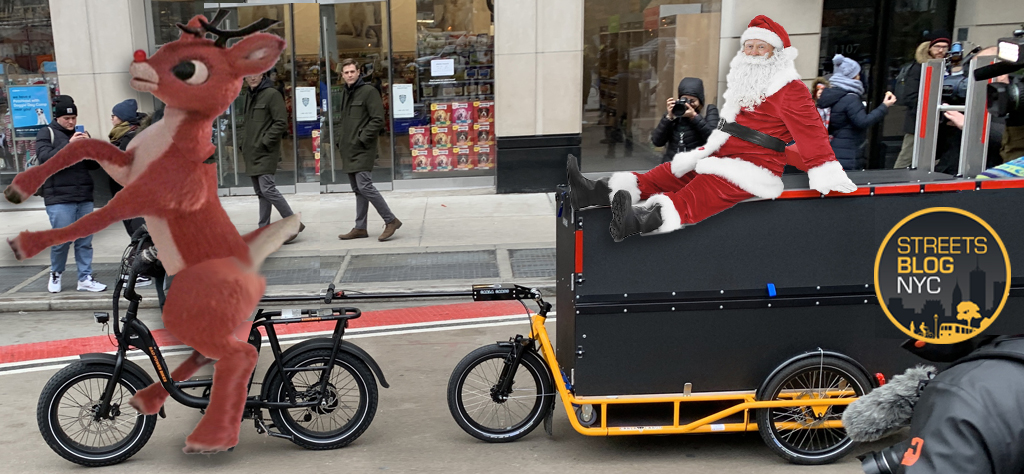
Setting the tone: In its performance report, DOT starts off by measuring how quickly it fixes traffic lights.
A preliminary version of the 2008 Mayor's Management Report was released last week [PDF], and the Department of Transportation section is déja vu all over again. Ten months after the end of the Iris Weinshall regime, DOT is still grading itself almost entirely according to how well it manages traffic flow, keeps highways looking tidy, and other car-oriented metrics.
Even the few new livable streets metrics in this year's MMR, like the number of speed humps installed near schools, fail to provide meaningful information. The MMR is legally mandated by the City Charter to serve as "a public report card on City services affecting the lives of New Yorkers." Yet, it tells us nothing about how the 101 new speed humps installed in 2007 have affected speeding and pedestrian injuries around schools or if more kids are walking and biking to school because of them. Rather, the report depicts a city agency that is more concerned with its own, internal bureaucratic activity than the outcomes of its policies.
The contrast with London couldn't be sharper. That city's transportation agency, Transport for London, sets targets and measures public policy outcomes, like reductions in carbon emissions, noise, particulate matter pollution, and traffic congestion -- as seen in it's detailed, 279-page, annual monitoring report on congestion pricing [PDF]. The report even goes so far as to gauge the effect of pricing on
London's employment growth and economic trends, sector by sector,
beginning on page 74. TfL's report does exactly what the MMR is supposed to do: It provides a treasure trove of data on how city transportation policies are affecting the lives of Londoners.


Graphs from TfL's Fifth Annual Report on congestion pricing.
Next to TfL's rigorous measurements and focus on actual policy outcomes, New York City's Mayor's Management Report looks laughably inadequate.
"There's nothing there on mode shift, nothing on reduction of VMT," says Paul Steely White of Transportation Alternatives. "The other thing that's missing is traffic fatalities -- there's no target there. There's still a reluctance to really lead on that, and that's unacceptable."
Instead of setting a goal for reducing traffic fatalities, the MMR measures differences year-to-year. True, this is the first year the MMR has tracked pedestrian and bicyclist fatalities separately from motorist fatalities, but compare that small step to TfL's safety goals, spelled out in its Five-Year Investment Programme (page 37 of this PDF):
- A reduction of 40 per cent in numbers Killed and Seriously Injured (KSI) by 2010 compared with 1994-1998 overall
- Separately for pedestrians, cyclists and motorcyclists, a reduction of 40 per cent in killed and seriously injured by 2010
- A 50 per cent reduction in the number of children killed or seriously injured
- A reduction of 10 per cent in the slight casualty rate per 100 million vehicle kilometres
London is not the only city to set such targets. Ottawa, Ontario, for instance, has adopted the goal of reducing VMT per capita. But in New York, even though PlaNYC has funneled more money to bike infrastructure and pedestrian improvements, the gears of city government apparently grind too slowly for the MMR to reflect new priorities at DOT.
The situation could have improved last year, with the passage of Intro 199. That was the bill City Council Member Gale Brewer proposed in April 2006, which would have given DOT a mandate to reduce traffic and to measure, among other things, how many people switch from driving to biking and transit. Instead, then-commissioner Weinshall helped torpedo the bill right before leaving DOT.
Better performance measures still could have been introduced after the bill failed, without
legislation. "Traditionally, the way these targets have been changed is
the Mayor sitting down with the agency," says White.
Now, Brewer is in talks with DOT to bring a successor to Intro 199 before the City Council later this year. "Ideally what's happening is that the Office of Long-Term Planning and Sustainability is working with Council Member Brewer to codify PlaNYC in the MMR," says White. That needs to happen if New York intends to narrow the transportation accountability gap with London.





